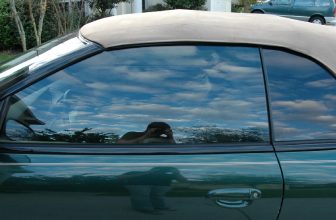How to Fix a Squeaky Car Window
Do you hear that squeaking noise coming from your car window? Don’t worry, it’s a common problem and one that’s easy to fix. In this blog post, we’ll walk you through the process of fixing a squeaky car window so that you can drive in peace without any annoying noises.

We’ll explain how to identify the source of the sound and provide detailed step-by-step instructions for how to fix a squeaky car window using simple household tools. Read on if you’re ready to learn all about dealing with those pesky squeaks!
Why Does My Car Window Make a Squeaking Noise?
Squeaky windows can be caused by a few different factors. The most common issue is due to loose or missing parts such as window tracks, seals, or guides that are meant to keep the window in place.
Another cause could be dirt and grime building up on the moving parts of the window, which can create friction when they move. Another possible cause is a bent or damaged window frame, which can be caused by an accident or regular wear and tear over time.
No matter the cause of your squeaky car windows, there are steps you can take to fix them. Keep reading for more information on how to repair your car window and get rid of that annoying squeaking!
To begin with, inspect the window tracks, seals, and guides to make sure they are in good condition. If any of them appear worn down or broken, then it’s time to replace them. You can get new parts from an auto supply store for a relatively low cost. Make sure you follow all directions for installation carefully.
Next, take a look at the window frame to check for any signs of damage or wear and tear. If you find any bent or broken parts, they will need to be replaced as well. Again, make sure you follow all directions for installation carefully.
11 Methods on How to Fix a Squeaky Car Window
1. Lubricate the Window Seal with Silicone Spray:
Start by lubricating the window seal using a silicone spray. This will help reduce any friction and make sure the window moves smoothly. Make sure to read all directions before using the product, as some products require you to wait a certain length of time before you can operate the window again. If the window is still squeaking after lubricating the seal, you may need to take further steps.
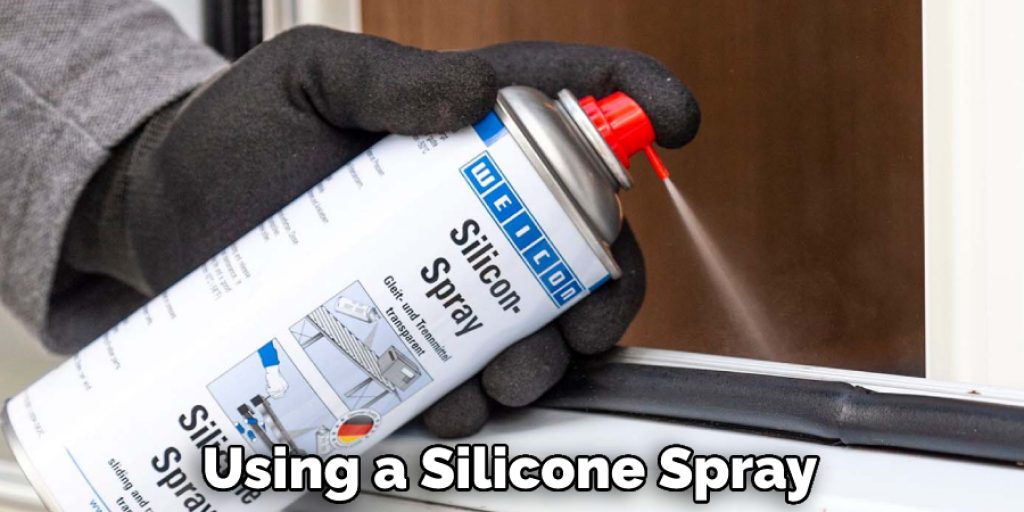
2. Adjust the Window Regulator:
If the window still squeaks after lubricating the seal, there might be an issue with the window regulator. To check this, open and close your car door a few times and listen for any changes in sound. If there is an unusual noise or scraping when opening or closing, your window regulator could be loose and needs to be tightened. You can do this by using a socket set to tighten up any screws that are visible on the regulator. If you feel uncomfortable doing this yourself, it’s best to consult a professional mechanic who can safely adjust the regulator for you.
3. Re-secure Loose Parts:
If there are any loose parts on your car window, such as screws or bolts, check them for tightness and re-secure them if needed with a screwdriver and wrench. This will help ensure that everything is firmly in place, which should minimize the chances of future squeaking. If the screws have been stripped or damaged, you will need to replace them. While you’re at it, use a lubricant on all the moving parts of the window to keep them from sticking and squeaking.
4. Clean Moving Pieces:
Use a rag dampened with warm water and mild soap to clean the moving pieces of the window. This will help remove any dirt and grime that could be causing friction and making the window squeak. Be sure to get the rag into all of the moving parts so that they are thoroughly cleaned. While you are cleaning, you can also assess the condition of the window and determine if any additional repairs are needed. Make sure to dry the window thoroughly before moving on to the next step.
5. Tighten Loose Screws:
Using a screwdriver, check for any loose screws on the frame of your car window and then tighten them as needed. Loose screws can cause movement when there shouldn’t be any, resulting in a squeaking sound. If there are any missing screws, you may need to replace them. However, if you’re unsure about how to replace the screws, it’s best to consult a professional.
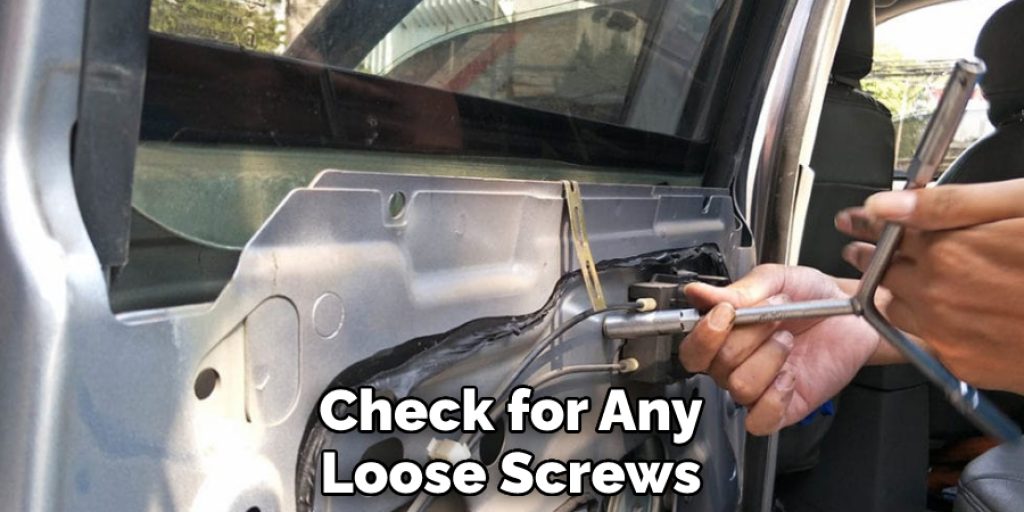
6. Apply Petroleum Jelly:
Apply a thin layer of petroleum jelly to the seals around the window to help reduce friction and minimize noise. Make sure not to put too much jelly, as this could make it difficult to open and close the window. You can also try using a commercial window lubricant from your local auto parts store. Whichever method you choose, make sure to open and close the window a few times to work the lubricant into all areas. This should help keep it quiet and operating smoothly.
7. Add Grease:
If your car has metal tracks, apply a light layer of grease to them. This will help reduce friction and prevent the window from squeaking when it moves. Be sure to use a grease specifically designed for automotive purposes, and apply it sparingly. Too much grease can cause the window to stick or not move properly. If your car has plastic tracks, then use a dry lubricant instead of grease.
8. Replace Broken Parts:
If you find that some parts of your car window are broken or worn down, they should be replaced as soon as possible. Get the exact replacement part for your car at an auto supply store and follow all directions carefully when installing it. You may need to use additional tools or special lubricants, depending on the replacement part. Once everything is installed and secured, test your car window to see if the squeak is gone. If not, you may need to repeat steps 1-6 again or try other methods of eliminating the noise.
9. Clean Out Any Gunk:
Take a look around the frame of your window and remove any debris or gunk that may be blocking the moving pieces. This could cause extra friction and make the window noisy. While you’re at it, wipe down the frame with a damp cloth to get rid of any remaining dirt. However, be sure not to damage the frame or window seals during this process. Although it may seem counterintuitive, gunk can actually cause a window to squeak.
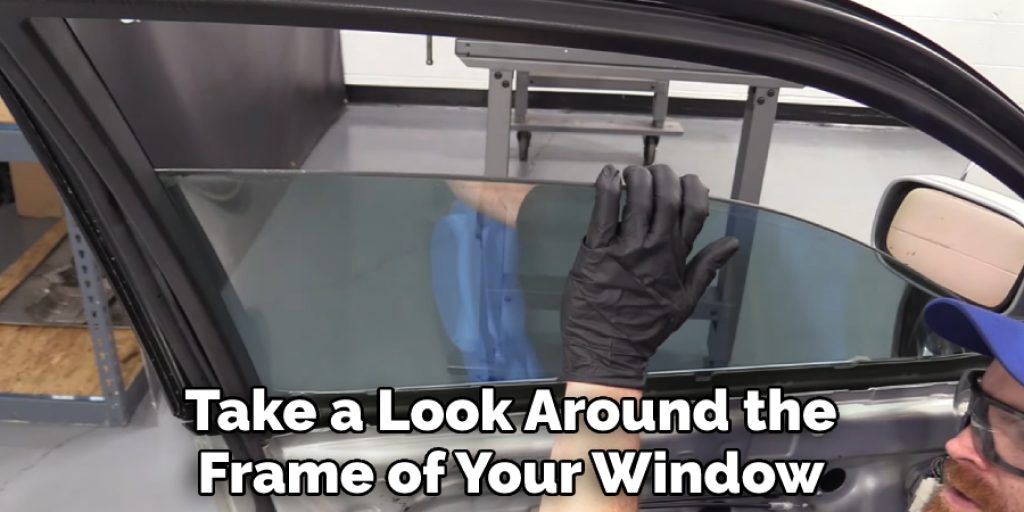
10. Add Expansion Strips:
If you need more support for your windows, add expansion strips to the frame. This should help provide more stability and reduce any noise when the window is opened or closed.
Start by measuring the window frame and cutting the strips to fit. Then, press the strips into place around the edges of the window, making sure they’re even and secure. Once done, check that the window moves smoothly and without any squeaking or rattling. If you’re still having issues, you may need to adjust the expansion strips or add additional ones.
11. Insulate Moving Pieces:
If you have an older car, it’s possible that the moving pieces of your car window are not insulated properly. Try adding some insulation to reduce the amount of noise they make when they move. You can buy insulation from a local store or use some spray foam or strips of felt.
Apply the insulation around the window’s tracks and other moving parts. This should reduce the squeaky noise and make your car much quieter. You can also lubricate the moving pieces with a lubricant such as WD-40 to reduce friction and further reduce the noise. Just be sure to use only a small amount of lubricant.
By following these steps, you should be able to fix your squeaky car windows in no time! We hope this guide was helpful and that you can now enjoy a quiet ride in your vehicle again. Happy driving!
Can You Use Wd-40 on a Squeaky Window?
Using WD-40 on a squeaky car window is not recommended, as it can damage the rubber seals and lead to further problems. The lubricant in WD-40 may also attract dust and dirt, leading to more frequent squeaking. Additionally, when the lubricant evaporates, the squeak could return in a harsher form than before.
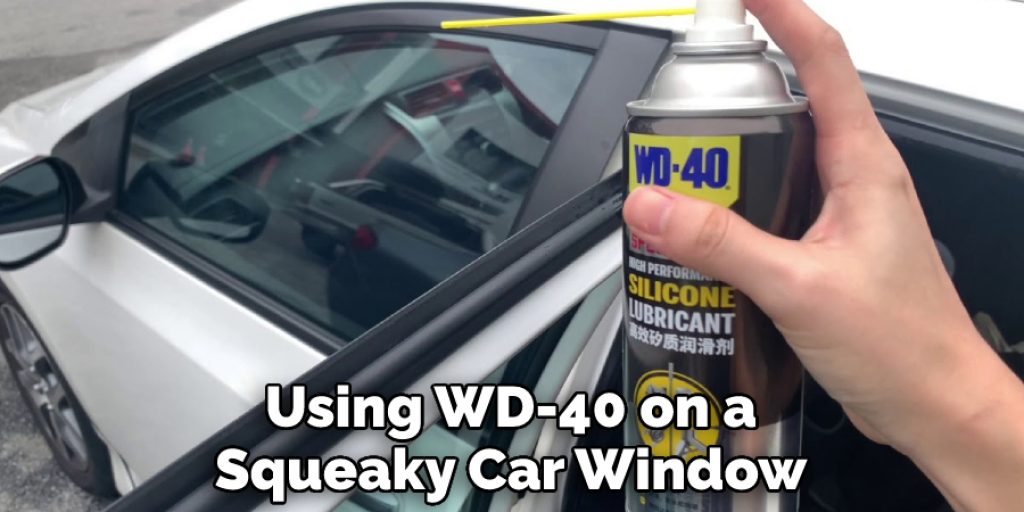
If you choose to use WD-40, make sure you clean the rubber thoroughly before and after the application. Apply a small amount to the problem area and spread it around with your finger to ensure it reaches all of the moving parts. Make sure you don’t apply too much, as this could lead to further issues down the line.
Conclusion
Fortunately, fixing a squeaky car window is a relatively easy and inexpensive fix. By following the steps above, you can eliminate that pesky noise in no time. Now that you know how to fix a squeaky car window, you can enjoy the quiet rides!
By following these simple steps, your window will be as good as new in no time. If the problem persists, it may be time to replace the window altogether. Thanks for reading and don’t forget to share this article with your friends who have been struggling with their own noisy windows.


